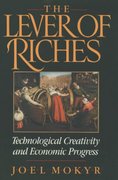Question
1. In any organization there are ______ levels of decision making. A. six B. two C. three D. one 2. Strategic decisions are about the
1. In any organization there are ______ levels of decision making.
A. six
B. two
C. three
D. one
2. Strategic decisions are about the ______ direction of the organization.
A. short-term
B. current
C. long-term
D. market
3. Tactical decisions identify the methods needed to meet ______ objectives.
A. upper-level strategic
B. daily operational
C. functional
D. new product
4. SWOT is an acronym for strengths, weaknesses, _____, and threats.
A. options
B. opportunities
C. opinions
D. outcomes
5. PEST stands for political, economic, social, and _____ factors.
A. time
B. transition
C. technological
D. transportation
6. The purpose of value chain analysis is to identify how an organization can provide value for its
A. employees.
B. suppliers.
C. customers.
D. creditors.
7. A strategy that works well for consumer-packaged goods (CPG) companies _____ for other
companies.
A. is probably best
B. will not necessarily work
C. is easy to implement
D. is hard to do
8. Developing supply chain strategies requires ______ among all the internal supply chain members.
A. complete agreement
B. short meetings
C. personal interest
D. cross-functional collaboration
9. Some keys to doing a value chain analysis include knowing what the organization' s _____ is.
A. core competency
B. financial situation
C. stock price
D. revenue
10. Supply chain strategies must support the _____
A. organization' s overall business strategy.
B. suppliers' income.
C. short-term goals.
D. production plans.
11. A firm may choose to focus its strategy on supply chain capabilities, such as _____, efficiency, agility, or flexibility.
A. spending
B. location
C. speed
D. production
12. S & OP is a decision-making process necessary to balance _____
A. demand and supply.
B. market expectations.
C. supplier revenue.
D. debt and income.
13. Important factors that influence the choice of a supply chain strategy include the _____ in which the firm exists, the market for products, variability of demand, and product life cycle.
A. location
B. nation
C. industry
D. culture
14. An important element in a strategic sourcing process includes ____
A. productive meetings.
B. new performance metrics.
C. an analysis of expenditures.
D. daily conversations.
15. A sourcing strategy must balance the _____ of different types of purchases.
A. seasonality
B. employees' opinions
C. relative risk and relative value
D. timing
- What are some of the tools to use in strategy development are?
- What a supply chain strategy is and how is linked to business strategy?
- What some common supply chain strategies in use today ?
- Why strategic sourcing is important and how is it done
Step by Step Solution
There are 3 Steps involved in it
Step: 1

Get Instant Access to Expert-Tailored Solutions
See step-by-step solutions with expert insights and AI powered tools for academic success
Step: 2

Step: 3

Ace Your Homework with AI
Get the answers you need in no time with our AI-driven, step-by-step assistance
Get Started


